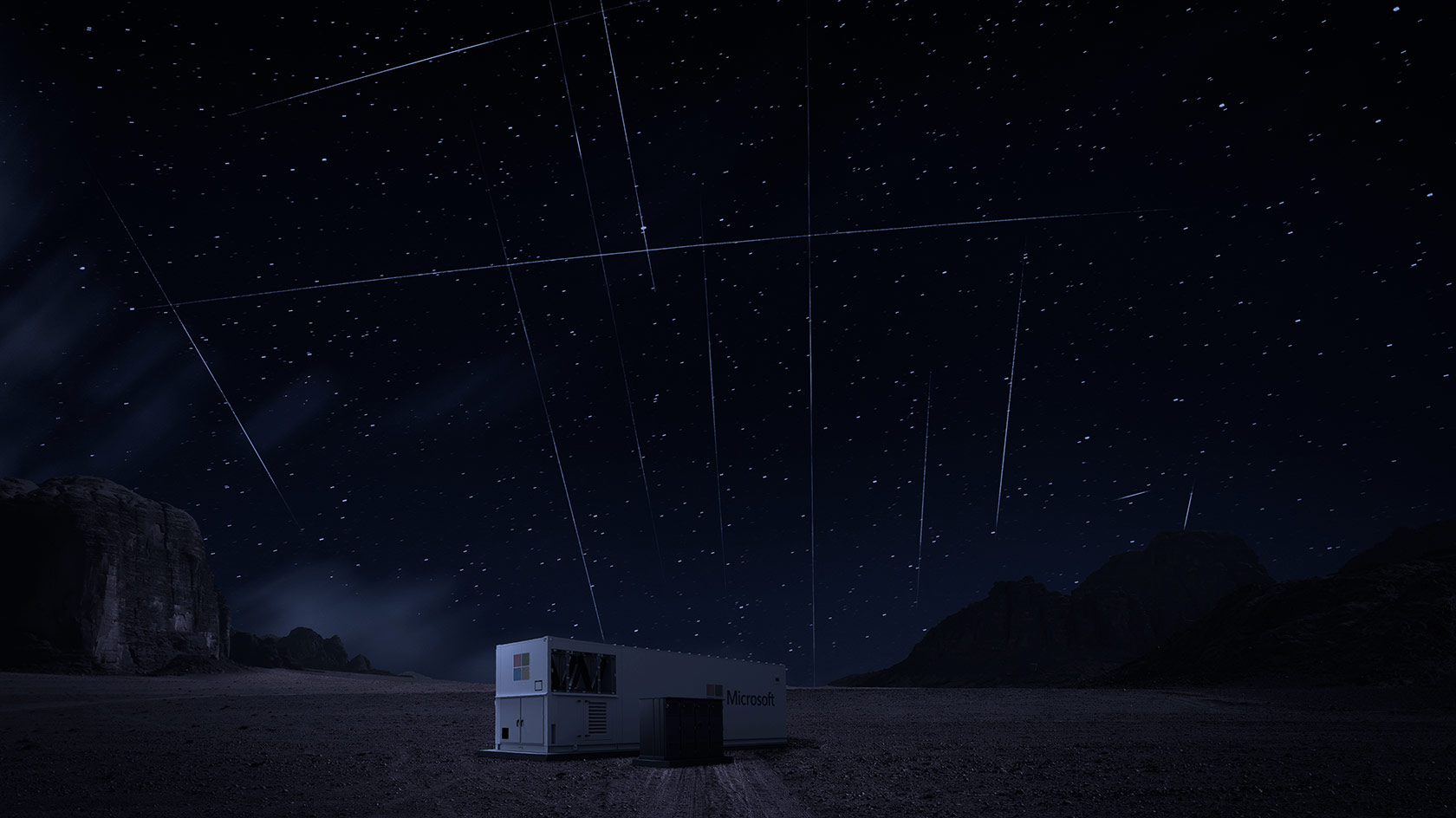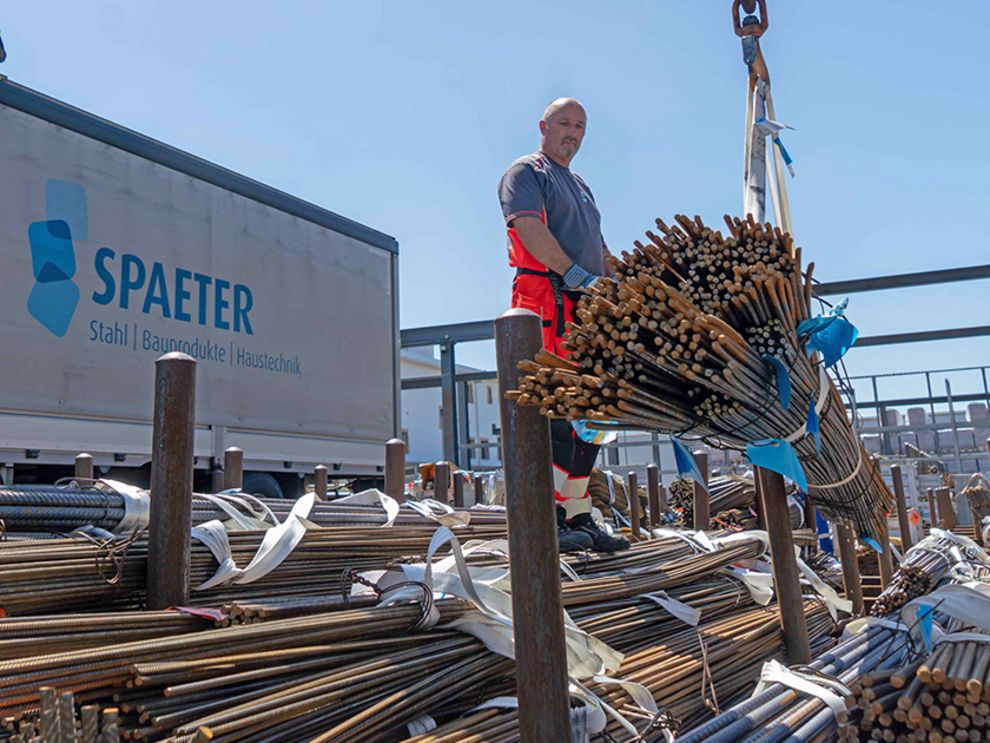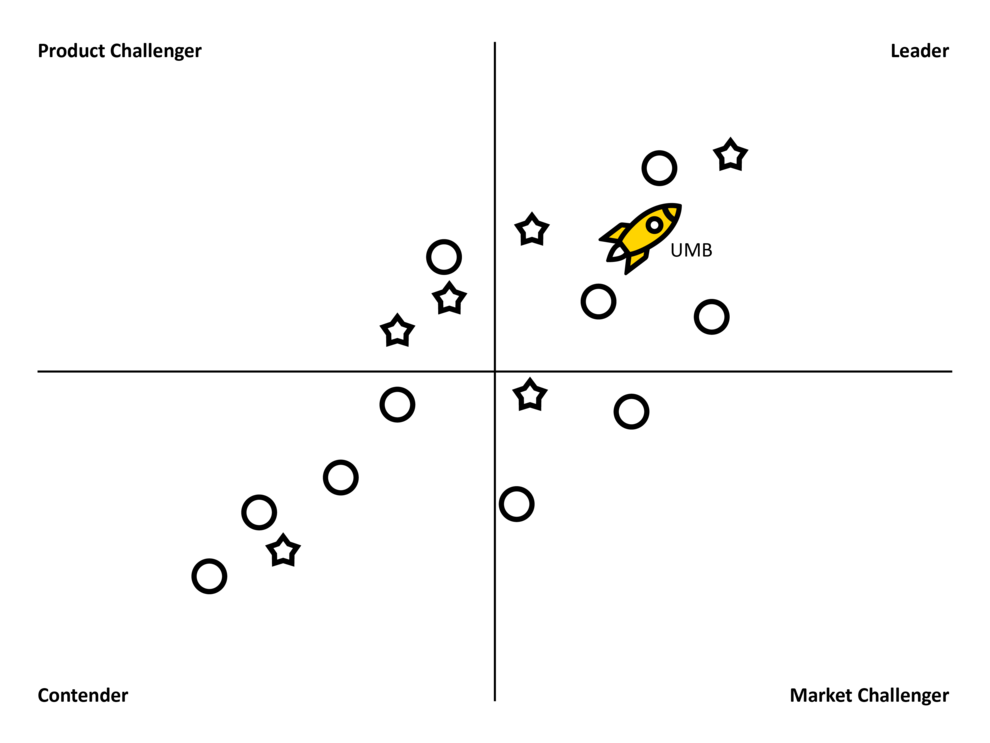Internet from Space for the Azure Cloud.
What do Microsoft's Azure cloud and Elon Musk's SpaceX Starlink project have in common? The two enterprises enable data processing and data transport even in the most remote regions of the world. Thanks to Microsoft and Starlink, cloud computing can be brought to areas where no communications infrastructure for such services exist.
#Azure Virtual WAN #Cloud Services #Cloud Strategy #IT Architecture #Microsoft Azure #Microsoft Teams Collaboration #Microsoft Teams Telephony #Microsoft
The global cloud computing market is expected to grow from currently around 370 billion USD to 830 billion USD over the next five years[i]. Microsoft, too, is counting on this enormous potential with Azure and specializes in making access to the cloud possible even where digital infrastructures are lacking. For this purpose, Microsoft has launched the Azure Space initiative[ii]. Consisting of several products and partnerships, the initiative aims to position Azure as a major player in space and satellite-related connectivity. One of the partnerships is the large-scale satellite project SpaceX Starlink.
An Azure MDC to be used in the middle of nowhere
There exists a need (often temporary) for cloud computing and storage even in areas with unfavorable conditions and a lack of infrastructure. Microsoft has developed the so-called Azure MDC, a modular data center, for such applications. The MDC is a portable data center that can be connected worldwide thanks to its integration with Starlink, Elon Musk's satellite-based broadband service. In this way, the cooperation between the Starlink project and Microsoft's Azure cloud enables the use of data center resources where cloud computing was previously impossible and where highly intensive, secure data processing on Azure is required. Microsoft mentions various concrete application possibilities for the modular data center: exploration for natural resources, humanitarian aid missions, but also its use as a mobile command center; MDCs are suitable for both civilian organizations as well as for military purposes, Microsoft says.
Azure and Starlink: the perfect combination
Starlink is one of the many amazing ideas of Tesla founder Elon Musk. It involves an arrangement of thousands of satellites in low orbit, which are intended to provide Internet services to those regions of the earth that do not have access to terrestrial data services. Starlink is already in a public beta phase in North America and offers download speeds of more than 150 Mbit/sec[iii]. SpaceX, like Microsoft, is located in Redmond on the West Coast of the United States, where Starlink research, development, manufacturing and control operations are located. So it appears that Microsoft Azure and SpaceX Starlink are an excellent match.
If no other network is available, an Azure MDC will utilize satellite communications as its primary connection to the world. In general, however, connectivity is provided by a module that continuously evaluates network availability - which is especially important where the network connection is unstable. In the event of an interruption, this module redirects the data stream to the backup satellite connection. This resilience ensures the continuous provision of services via Azure.
MDC: Immediate utility under tough conditions
Microsoft emphasizes that the modular data center is a self-contained data center unit that can be transported on site and provides "near-instantaneous utility"[iv]. The unit is robust, shielded against high-frequency radiation, and operates in harsh climates where temperature and humidity are unfavourable or level sites are difficult to find. MDC can expand on-site computing and storage capabilities, run high-performance applications, manage and operate ultra-low latency IoT and real-time analytics workloads, as well as maintain cloud applications to support critical infrastructure recovery. Microsoft sees connectivity as one of the key features of modular data centers. Users can operate these portable data centers the way they want - or when they want - with full network connectivity, temporarily connected to the network, or completely isolated. According to Microsoft, this is a unique feature that allows customers to access the Azure Cloud on their own terms.
Azure data centers for unconventional environments
MDCs are not the first Microsoft data centers to be deployed in exceptional environments. With its Natick project, the company demonstrated that it can also operate modular data centers beneath the sea, whose energy is supplied exclusively by solar cells and wind turbines; cooling water is not required. (We have reported on this topic earlier.[v]) Unlike the Azure MDCs that are already available, the underwater data center modules are still prototypes.
At UMB AG we offer a wide range of cloud services. Our specialists will make sure the services from the Azure cloud will reach you - regardless of the location of the data center. You can expect an efficient team and well-established partnerships with manufacturers and distributors. Our services will leave you with more time for your core business. Contact us if you want to know more about the Microsoft Azure cloud offering.
[ii] https://news.microsoft.com/azurespace/
[iii] https://futurism.com/the-byte/starlink-beta-outperformed-most-internet-us
[iv] https://azure.microsoft.com/en-us/blog/introducing-the-microsoft-azure-modular-datacenter/
[v] https://www.umb.ch/blog/news/detail/unter-dem-meer-funktionieren-die-server-besser


